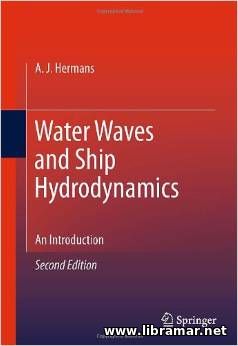 This book was written by A. Hermans with the intention to provide readers with a general technical introduction to the various aspects of the water waves playing the important roles in hydrodynamics of ships as well as offshore engineering. Firstly, it derives the equations and linearized boundary conditions that describe the non-viscous free waves with the particular attention being paid to the combination of non-steady and steady flow fields.
After that, the author derives some of the simple types of free wave solutions, for example cylindrical and plane waves. The source singularity function has also been derived for several steady and unsteady situations; subject functions are playing a role in the numerical codes that are used for the description of the ship's motion. The content of the publication is divided into eight major chapters addressing the water waves theory, second-order theory, non-linear and irregular waves, linear wave phenomena and asymptotic formulation, and other important technical aspects of the ship hydrodynamics.
The appendices at the last part of the book are providing such important additional information as the methods of characteristics and of stationary phase, two-dimensional Green's function, singular integral equations and simplification of the relevant algebraic equations. A very useful and practical volume for ship designers.
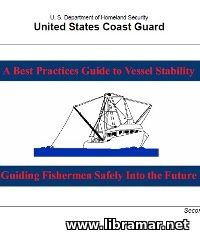 This training document was prepared by the Homeland Security Department of USCG, which maybe is the most authoritative regulatory and control organization in the maritime world. The booklet will provide required guidance in the stability of fishing vessels. The basic stability concepts have been introduced in the pages of this volume which will be practically interesting for the crew members and owners of the fishing ships, as well as to any other parties involved in commercial fishing.
The book will tell the readers about stability, providing them with the answers to such question as how does stability of the vessel work and how is the stability determined. They will understand the difference between initial stability and overall stability and get a lot of other useful information covering a widest range of different subjects related to the stability of the fishing vessels. The authors have listed the most important lessons at the beginning of the sections in order to assist readers.
The readers will also know what they can do to let their vessel maintain adequate stability and understand how the operation of the vessel affects stability. The book was written having crew members and not professional naval architects in mind, so the information is presented in a simple and clear language to make it understandable for everyone on board and ashore.
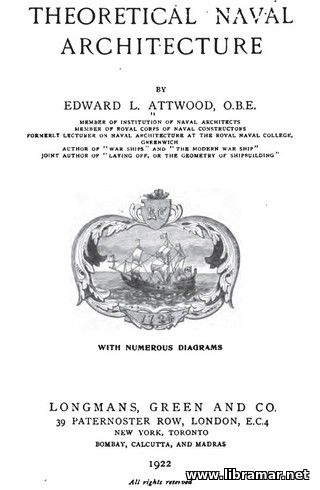 This work by Edward Attwood is an expansion of his Textbook of Theoretical Naval Architecture which was published more than a century ago. The content of this book has been prepared with the intention of the author to provide all readers, including students of naval architecture and professional draughtsmen with a good and useful textbook explaining the calculations they are continually involved in every day.
The book is expected to form a textbook for the different exams held in naval architecture. Since this subject is constantly growing, it is really impossible to confine all relevant information in a single volume; however, the author has tried to demonstrate how exactly the ship calculations could be carried out in the intelligent manner giving students a perfect fundamental knowledge on which the further progress in the field can be achieved easier.
One of the special features of this volume is a huge number of the examples provided in the text as well as at the end-chapters, and this feature has been found to be greatly appreciated by the readers, and students, in particular. The author of this classic and really brilliant textbook hopes that his work would be found practical and useful to that class of readers which is willing to obtain a good working knowledge of the basic principles of naval architecture.
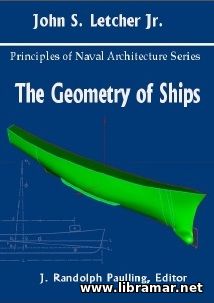 Geometry is the discipline directly dealing with the properties and measurements plus the relationships of the points and their sets. Vessels and other marine structures are really large and usually quite complex objects therefore the final success of their planning and further production mostly depends on proper geometric descriptions of the components they usually consist of, as well as on their positional relationships.
Traditionally, a 3D models of representation are utilized, and particularly at different scales and lesser levels of details in comparison to the actual objects. The process of producing real products commonly consumes large quantities of the material, human and time resources which will of course be considered wasted should the final result of this production process be functioning not in a way it was originally supposed to function.
This volume covers the most important aspects of the ship geometry, such as the geometric modeling as applied to the marine design, coordinate systems, geometry of curves/surfaces, subdivision surfaces and geometry of solid objects, polygon meshes, definition of the hull surface, weight/displacement, form coefficients of the ship hulls, hydrostatic analysis, capacity and arrangement issues including tonnage, subdivision of the compartments, tank and container capacity, decks and bulkheads as well as superstructures and hull appendages...
 Here is a re-print of the classic book on the theoretical foundations of naval architecture. This book will be of great interest for the naval architects and other workers of the shipbuilding facilities and drawing offices because it will offer them an excellent text clearly explaining all associated calculations.
The author of this volume is also expecting that his work may serve as a standard textbook covering the whole theoretical portion of the exam in naval architecture. Unfortunately, it was not possible to include literally all subjects, for example such subjects as the advanced stability work, vibration, rolling of the vessels and some others. However, the author has really made his best to cover as many of the important topics of naval architecture as possible, and to provide readers with a huge amount of interesting and understandable theoretical information on the naval architecture basics.
One of the special features of this title is the number of practical examples presented in the text of the book as well as at the end of the chapters. These subject are aimed to help students test their grasps of processes and processes covered within the paper. Most of the examples have been taken from the real calculations of different drawing offices and this makes them practically useful.
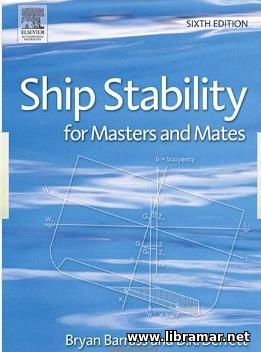 One of the most popular and practical books on ship stability. This textbook has been subjected to a full review and update by its new author in order to ensure a modern and deep coverage of all relevant topics.
The main content of the publication has been provided with a completely new and unique introductory part giving the types of the vessels together with the general characteristics; this has been done to indicated to the reader the typical or actual sizes of the merchant ships of today. In addition, there are four completely new chapters covering the ship squat, interaction, deadweight scale and, finally, trim and stability.
There is also one more new section in the Appendices and it deals with the draft surveys - the content of this section has been re-written to make it more understandable for the students of naval architecture. The authors have paid really careful attention to the fundamental theoretical principles of ship stability and strength, and they have given so many exercise questions and worked examples to make sure that the students who really work through this volume will have good results.
This is an excellent textbook delving into many basic matters of ship stability and therefore great for all categories of readers, from students to the pro engineers; it shall also be used as a very helpful shipboard reference book.
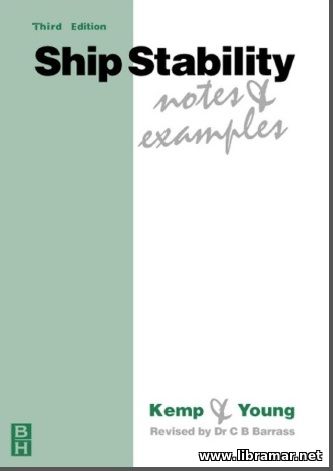 This book is expected to be very helpful to the ship masters and mates and also to the naval engineering officers who are preparing for their SQA/MQA examinations. It will also be extremely good when used as a quick reference tool for the seagoing personnel and also shore-based employees directly engaged in the ship handling operations.
The main objective of this title was to assist all students making preparations for the ship stability examinations by presenting sixty-six illustrative worked examples accompanied by the another fifty examples with answers. Working through the content of this volume will definitely result in getting a very thorough understanding of the subject.
The worked examples included in the volume demonstrate the most efficient and also quickest method to particular solutions. The book covers the first principles, Simpson's rules, transverse and longitudinal stability of the ships, bending of beams and ships, procedures to be followed during the dry-docking, stability data, free surface effects, stability information, etc.
Four appendices to the main content of the book provide the revision on-liners and problems, give the correct answers to the fifty problems contained in the second appendix, and, what is so important, provide students with the valuable tips and instructions on how to pass the examinations in maritime studies...
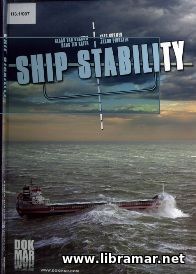 Ship stability is deservedly considered one of the most difficult concepts to define. The whole technical idea of a stable character is grasped even though it is quite hard to be put in words. Same would apply to the notion of a stable vessel because stability is a very complex entity. It still plays a critically important role in ship navigation. Should the ship be unstable, immediate danger arises to the vessel and people on board as well at to the surrounding environment.
That is the reason why the regulations have been established to govern the stability of the ships. One of the main strength of this volume is that it makes the ship stability visible to the readers and also makes it accessible and easily understandable even for the newcomers because of the approach applied by its author who has supplemented the theoretical part of the publication with numerous informative figures and illustrations as well as detailed drawings. The book is expected to be highly suitable for the professional training in the classroom or for the self-studying.
All required and important topics have been addressed in this volume together with the abbreviations and terminology used in the naval architecture and ship stability, in particular. Note that this book is an excellent supplement to another publication prepared by the same author under title Ship Knowledge so we would recommend you to have a close look into both books.
|







